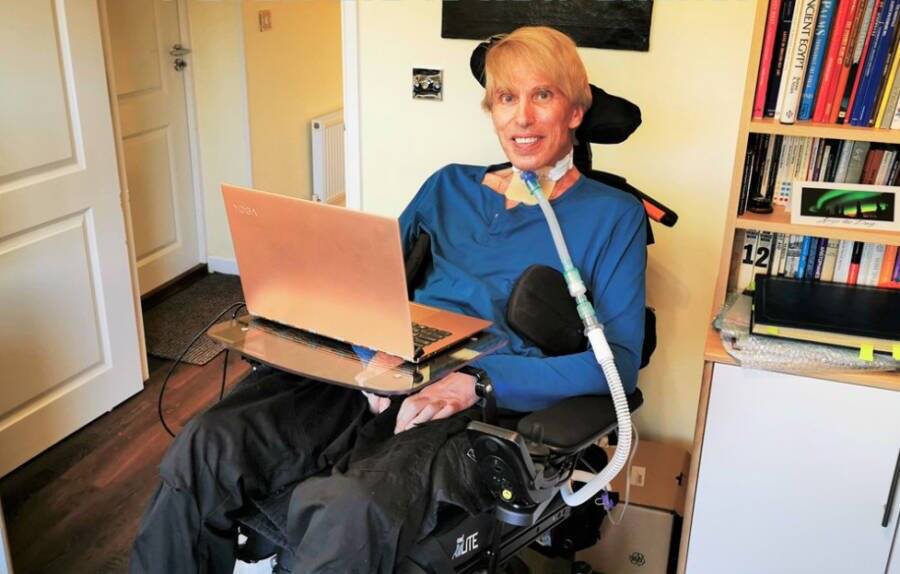Terminally Ill Scientist Bio-Hacks His Body To Become Human Cyborg

TwitterPeter Scott-Morgan in his cyborg wheelchair.
It may sound like the beginning of an evil villain’s origin story – a man given just months to live turns himself into a living robot, complete with a new body and a Darth-Vader-like voice and then proceeds to take over the world – but Dr. Peter Scott-Morgan is anything but a villain. In fact, he’s become the superhero of his own story.
After being diagnosed with a motor neuron disease (MND) in 2017, and told that he would likely be dead by the end of 2019, Scott-Morgan decided to take matters into his own hands. While most doctors would have simply given him the tools to stay alive, Dr. Scott-Morgan turned himself into the tool, ordering several surgeries to “hack” his body and turn him into, essentially, a human cyborg.
Perhaps the most far-fetched notion of this plan? It seems to be working.
In just 24 days, Scott-Morgan went from a terminally ill man to “the most advanced cybernetic organism ever created in 13.8 billion years” after undergoing multiple surgeries in less than a month.
The first few worked to insert a feeding tube directly into his stomach, so he’d have better control over his eating. Next, he had a catheter placed directly into his bladder and a colostomy bag placed directly into his colon, as to have better personal control over his bowel movements. Finally, he underwent a laryngectomy to prevent saliva from slipping into his lungs, a common side effect of MND.
Though the laryngectomy essentially destroyed his ability to speak, Scott-Morgan’s quality of life was vastly improved. With the catheter and colostomy bag he now no longer had to rely on outside help to use the bathroom. Even though he had no ability to speak, he engineered a digital avatar that mimicked his facial expressions, that he carries around with him on his specially designed wheelchair.
He also had laser eye surgery to give him perfect vision at 27.5 inches — the distance to his computer screen — so that he can continue researching eye-tracking technology, which he hopes to use to better communicate with others.
Enjoyed this science news roundup? Check out our other science news stories. Then, dig deeper into the some of the most interesting stories in science.





